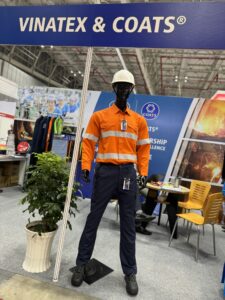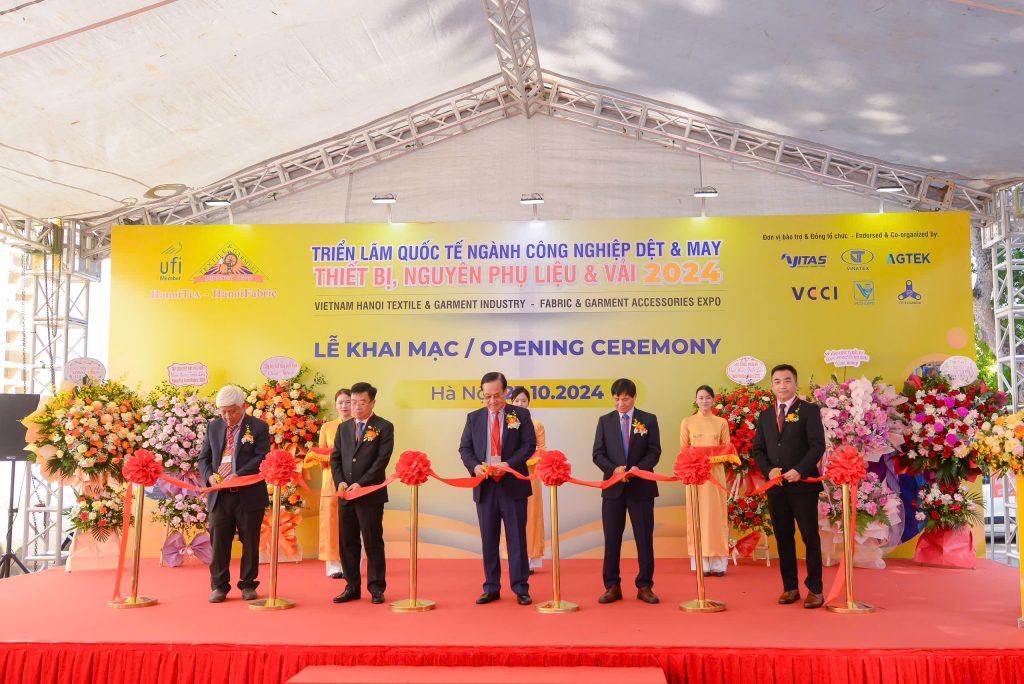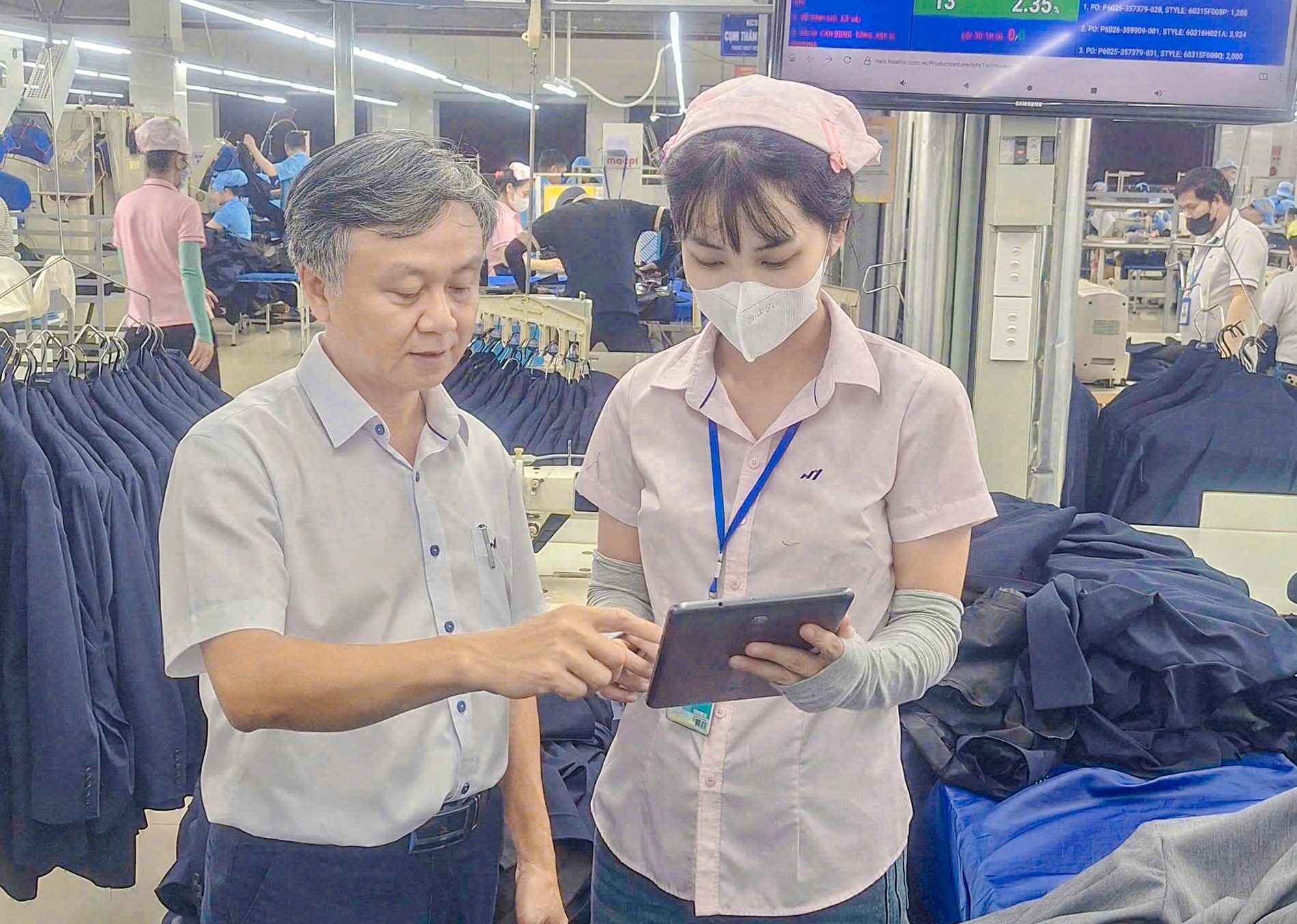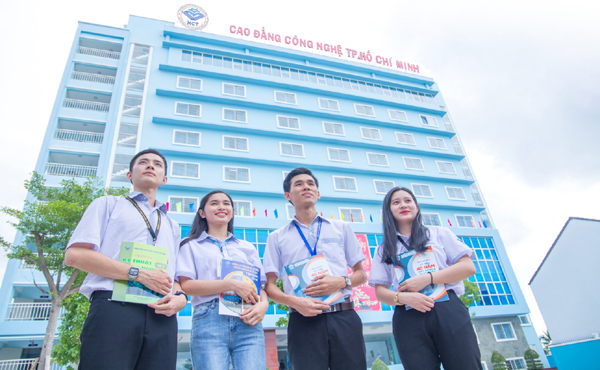Becoming a Comprehensive Destination for Green Fashion Products
Developing green and circular production is a key growth objective of the Vietnam National Textile and Garment Group (Vinatex). Researching and applying advanced, environmentally friendly technologies while developing safe and sustainable products are the main concerns. This approach enhances production capabilities while allowing the industry to move away from traditional textile and garment manufacturing, which is currently facing fierce price competition.

Challenges Remain
Vietnam’s textile and garment industry has faced several challenges in recent years, including declining consumption, low product prices, and intense competition from rivals. This downward trend has been exacerbated by the COVID-19 pandemic, which led to decreased demand in export markets, economic stagnation, rising inflation, and additional pressures from wars, natural disasters, floods, and currency devaluations in textile-exporting countries competing for market share.
Furthermore, rapid advancements in science and technology have ushered in a new era of high-efficiency textile and garment production. This has created disparities between countries capable of investing in modern equipment and those with outdated technologies.
Globally, the primary raw materials for textile production have long been polyester and cotton fibers, which account for over 90% of the market. The remaining share consists of specialized fibers used in industries such as agriculture, infrastructure, and other niche applications.
Although Vietnam’s textile and garment industry has climbed into the top five globally, with annual export revenue exceeding $40 billion, domestic enterprises (excluding foreign-invested companies) still face significant hurdles. These include capital investment constraints, supply chain limitations, and difficulties in competing in terms of technology, equipment, and environmental compliance.
In the export market, Vietnam competes with major textile-exporting countries such as China, India, and Bangladesh. Domestically, the industry also struggles with labor shortages, rising wages, increasing costs for electricity and water, stringent wastewater treatment regulations, and logistics expenses.
New Directions, New Products

Faced with these challenges, Vinatex has continuously sought new directions for industry development. In addition to implementing flexible production strategies and investing in modernizing traditional manufacturing lines, the company has focused on researching innovative, high-value-added, and technically advanced products to penetrate promising niche markets.
As a result of these efforts, Vinatex has officially introduced its flame-retardant fabric to the market. This fabric is manufactured in a closed-loop process, from fiber production to garment manufacturing, on the woven fabric production line of Nam Dinh Textile and Garment Corporation.
To produce flame-retardant fabric, the fiber must be made from aramid, a synthetic fiber known for its high heat resistance (meta-aramid) and superior abrasion and tensile strength (para-aramid). Additional components such as anti-static agents, Modal acrylic, and Lyocell are incorporated. Due to the fiber’s length (ranging from 38mm to 51mm) and the presence of multiple components (some comprising only a few percentage points), specialized machinery is required, including precision blending equipment and unique spinning machines.
Once woven, the fabric undergoes high-pressure dyeing at temperatures above 130°C using strictly selected European dyes and chemicals to ensure users safety and environmental compliance (in accordance with international standard 120).
After more than nine months of research and development, Vinatex’s technical team, in collaboration with experts from Coats Group, successfully established production processes, selected equipment, and commenced manufacturing according to customer orders. At industry trade fairs specializing in flame-retardant materials in Ho Chi Minh City and Dubai, Vinatex showcased its flame-retardant fabrics and garments to potential buyers.
To meet diverse customer needs, Vinatex’s flame-retardant fabrics adhere to the following international standards:
- OEKO-TEX 100
- NFPA 2112: Flame-retardant clothing for industrial workers exposed to flash fires.
- ASTM F1506: Protective clothing against flames and electrical arc hazards.
- ISO 11612: Heat- and flame-retardant protective clothing.
- NFPA (Wildland Firefighting Standard): Protection for wildland firefighting personnel.
- NFPA 2113: Guidelines for selecting, using, and maintaining flame-retardant clothing.
- EN ISO 1149: Electrostatic properties of protective clothing fabrics and materials.
Recently, the first batches of fabric and garments have been tested, exported, and delivered to customers. Feedback from buyers confirms that these products meet the required standards and technical specifications while also providing a soft and safe wearing experience. This positive reception highlights Vinatex’s commitment as a responsible manufacturer and strengthens consumer trust.
With strong confidence in the production capabilities of Nam Dinh’s flame-retardant fabric line, Coats Group experts have collaborated with Vinatex to set a goal of reaching $40 million in revenue from woven flame-retardant fabrics by 2030. This figure does not include revenue from knitted flame-retardant fabrics (expected to account for an additional 30%) and chemically coated or flame-retardant fashion fabrics.
To achieve these ambitious targets, Vinatex plans to invest in 2025 in specialized equipment such as multi-component fiber blending and metering machines, 51mm fiber-specific spinning machines, dedicated fiber-spinning and weaving lines, high-pressure dyeing machines for high-temperature fabric dyeing, shrinkage-resistant finishing machines, and laboratory testing devices. Additionally, the company will enhance management capabilities by adopting digital technologies and product traceability software to ensure quality control.
The initial success of applying innovative materials to flame-retardant fabric production for specialized markets has opened a new development path for Vinatex’s long-term strategy. This achievement serves as a significant motivation for Vinatex’s technical team. Looking ahead, there is hope that flame-retardant fabrics produced by Vinatex and Coats Vietnam will solidify their position in the global market for fire-retardant textiles.





